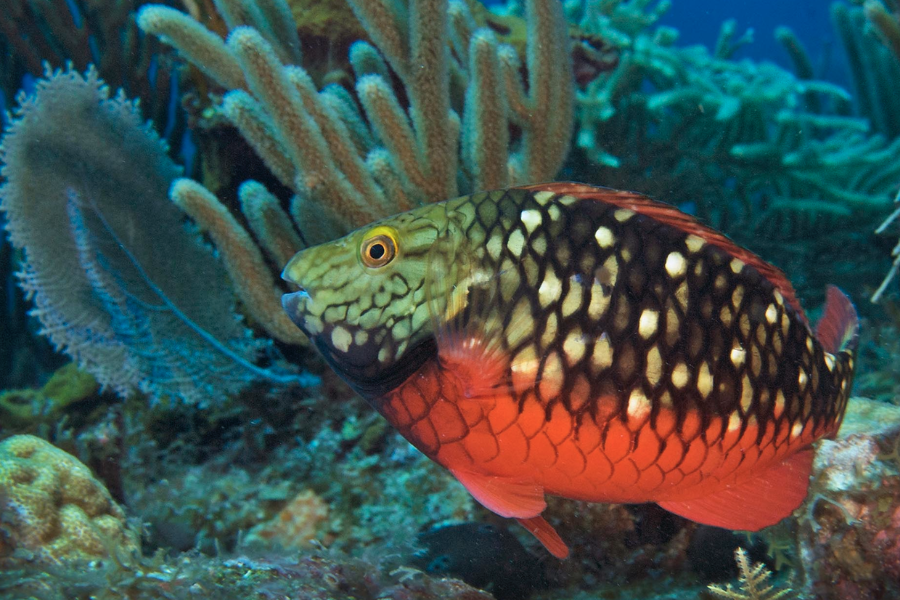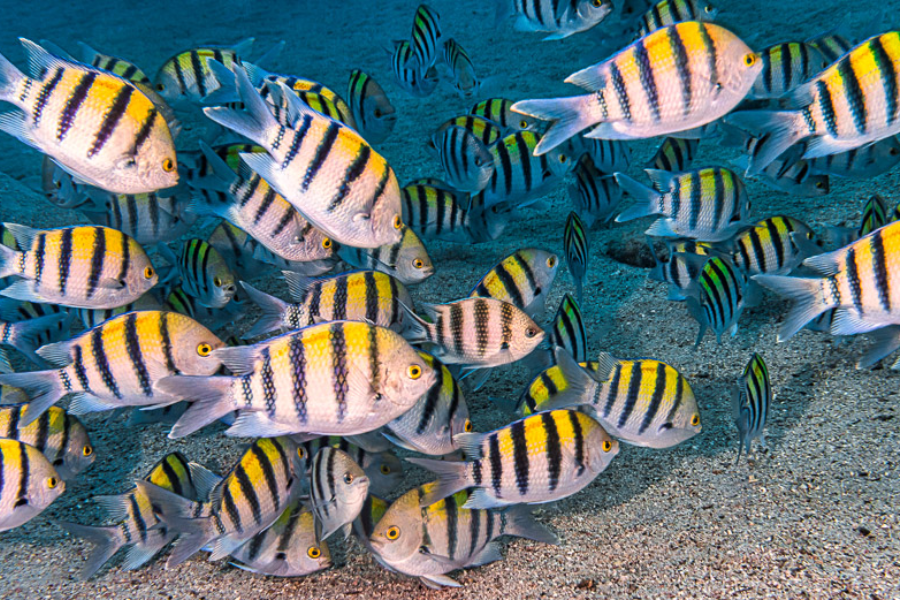Introduction
Nestled in the southern Caribbean Sea, the island of Curaçao is known not only for its colorful architecture and rich cultural history but also for its spectacular underwater ecosystem. Divers and marine biologists from all over the world are drawn to this paradise to explore its coral reefs and vibrant marine life. Among the many attractions beneath the waves, Curacao fish stand out for their diversity, vivid colors, and ecological importance.
Introduction to Curacao’s Marine Biodiversity

Curaçao’s reef system is part of the larger Caribbean Sea biodiversity hotspot, home to over 65 species of coral and more than 500 species of fish. Many of these are endemic or rare, making the island a premier destination for ecotourism and scientific research. The sheer variety of Curacao fish is a testament to the island’s pristine waters and effective marine conservation policies.
The Coral Reefs That Sustain Life
Coral reefs around Curaçao serve as the foundation of its marine life. These reefs provide shelter, food, and breeding grounds for numerous species. The complex structures of these coral systems are teeming with Curacao fish, each playing a specific role within the ecosystem. From herbivorous parrotfish that clean the reefs to predatory groupers that maintain population balance, each fish contributes to the reef’s health.
Unique Species of Curacao Fish
Some fish species found in Curaçao are hard to spot anywhere else in the world. The striking Queen Angelfish, the elusive Frogfish, and the majestic Blue Tang are just a few of the spectacular Curacao fish that captivate divers. Their distinctive patterns and behaviors make them favorites among underwater photographers and marine life enthusiasts.
Night Diving: Discovering Nocturnal Fish Behavior
The ocean around Curaçao transforms at night, revealing a different side of marine life. Nocturnal species like the squirrelfish and various crustaceans emerge from hiding. Night diving offers an intimate glimpse into the secret lives of Curacao fish, who behave differently in the absence of daylight predators. Observing these nighttime activities adds depth to understanding fish behavior and survival strategies.
Importance of Curacao Fish to the Local Economy
Fishing has long been a part of Curaçao’s culture and economy. While large-scale commercial fishing is limited, artisanal fishermen rely on the local waters for sustenance and income. The sale of Curacao fish at local markets, especially species like snapper and mahi-mahi, helps support families and small businesses. Additionally, the island’s fishing traditions are deeply rooted in community celebrations and food culture.
Snorkeling and Diving Tourism
Tourism in Curaçao is heavily influenced by its underwater attractions. Divers visit places like the Blue Room Cave, Tugboat Reef, and Mushroom Forest to investigate. These underwater paradises are alive with thousands of Curacao fish, making every dive a vibrant and unpredictable experience. The tourism industry greatly benefits from these fish-rich ecosystems, highlighting the need to protect them.
Threats Facing Curacao Fish Populations
Despite their beauty and abundance, Curacao fish are under increasing threat. Climate change, overfishing, and pollution pose serious challenges. Rising ocean temperatures lead to coral bleaching, which in turn affects fish populations that depend on healthy reefs. Invasive species, such as the lionfish, also disrupt the local marine balance by preying on juvenile fish and competing for resources.
Conservation Efforts and Marine Protection
Recognizing the importance of preserving marine biodiversity, Curaçao has established several marine protected areas and no-fishing zones. Organizations like Carmabi Marine Research Station work tirelessly to study and conserve coral reef systems and Curacao fish species. Education campaigns and citizen science projects are also helping locals and tourists become stewards of the sea.
Citizen Science and Public Involvement

One of the most promising aspects of marine conservation in Curaçao is the engagement of non-scientists in data collection. Snorkelers and divers often participate in fish counts, photography-based identification projects, and reef monitoring. These community-led efforts contribute valuable information on the state of Curacao fish populations and encourage a culture of ocean stewardship.
Sustainable Fishing Practices
To ensure that future generations can continue to benefit from marine resources, sustainable fishing practices are being promoted. This includes using selective gear, respecting fishing seasons, and avoiding overharvesting. By implementing these methods, the local community helps maintain healthy stocks of Curacao fish, which are vital to both the ecosystem and the economy.
Role of Curacao Fish in Reef Health
Many species of Curacao fish play essential roles in maintaining reef health. Herbivores control algae growth that might otherwise smother corals, while cleaners like the cleaner wrasse help rid other fish of parasites. Predators maintain the balance of populations, ensuring that no single species dominates the ecosystem. These natural interactions create a self-regulating marine environment.
Scientific Research and Discovery
Curaçao is a hub for marine science, attracting researchers who study everything from fish behavior to genetics. The island’s diverse reef systems offer a unique opportunity to understand the complexities of tropical marine life. Researchers have even discovered new species of Curacao fish, contributing to global scientific knowledge and enhancing the island’s prestige as a biodiversity hotspot.
Education and Marine Awareness
Local schools and marine programs often include lessons on reef ecology and conservation. By instilling a sense of responsibility and pride in the island’s marine life, educators are shaping the next generation of conservationists. Field trips and hands-on activities like reef cleanups and fish identification workshops help children connect directly with Curacao fish and their habitats.
Aquarium Trade and Ethical Concerns
The exotic appearance of many Curacao fish has made them popular in the global aquarium trade. However, this demand raises ethical questions regarding wild capture and the impact on local populations. Responsible sourcing and captive breeding programs are being explored to meet demand without harming natural ecosystems. Education about these issues is vital for sustainable practices.
Culinary Delights: Curacao Fish in Local Cuisine
Curaçao’s culinary scene proudly features its fresh seafood. Dishes like grilled snapper, fish stew, and ceviche are staples at seaside restaurants. Locally caught Curacao fish not only support the economy but also preserve culinary traditions passed down through generations. Chefs often emphasize sustainability, working with suppliers who follow ethical fishing practices.
Impact of Climate Change
Global climate change continues to affect marine ecosystems in profound ways. Rising sea temperatures, acidification, and stronger storms all threaten coral reefs and, by extension, the Curacao fish that depend on them. Addressing these issues requires international cooperation, scientific research, and local action to build resilience in marine environments.
Diving Safely and Responsibly
While diving and snorkeling offer unforgettable encounters with Curacao fish, it’s crucial to practice responsible tourism. Avoiding contact with coral, not feeding fish, and using reef-safe sunscreen are just a few ways to minimize human impact. Dive operators often provide environmental briefings to ensure that guests contribute positively to marine conservation.
Eco-tourism and Its Role in Conservation
Eco-tourism in Curaçao is more than a trend—it’s a movement that integrates environmental care with travel experiences. Tour companies now offer eco-certifications, emphasizing sustainability and marine education. Eco-tourism encourages visitors to become conservationists by promoting the worth of Curacao fish and fostering an appreciation and respect for marine life.
Future Outlook: Protecting Curaçao’s Underwater Treasure
Looking ahead, the future of Curacao fish depends on continued collaboration among governments, NGOs, local communities, and tourists. Investments in renewable energy, marine science, and education will help mitigate threats. With the right approach, Curaçao can serve as a global model for how to protect and cherish its marine ecosystems.
Conclusion
In every direction beneath the waters of Curaçao, life pulses in dazzling color and variety. From the smallest goby to the largest tarpon, Curaçao fish represent the lifeblood of the island’s oceanic ecosystem. Protecting them is not only a matter of ecological responsibility but also of cultural identity and economic sustainability. Whether you are a diver, a scientist, a local fisherman, or a tourist, your actions can help ensure that these vibrant fish continue to thrive for generations to come.
Get the inside scoop on your favorite stars at grinnos.com
